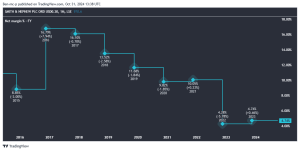Share investing can provide a wealth of opportunity for individuals to create a lifelong passive income. Few asset classes have provided the sort of return that equities have since the second half of the 20th century.
However, devising a winning investment strategy can take time, a considerable amount of research, and a lot of trial and error. Making a healthy return is by no means a guarantee, and patience is key.
However, there are a few golden tips investors can follow to try and build long-term wealth. If I had a £20,000 lump sum to invest, here’s what I’d do to try and achieve a near-£16k passive income for the rest of my life.
Topple tax
My first act would be to buy assets using a tax-efficient financial product. In the UK, we’re talking about an Individual Savings Account (ISA) or a Self-Invested Personal Pension (SIPP).
The annual allowances for these products are pretty generous at current levels. The limit for ISA investments is £20,000. For the SIPP, it is typically an individual’s annual earnings, or £60,000, whatever is highest.
Please note that tax treatment depends on the individual circumstances of each client and may be subject to change in future. The content in this article is provided for information purposes only. It is not intended to be, neither does it constitute, any form of tax advice. Readers are responsible for carrying out their own due diligence and for obtaining professional advice before making any investment decisions.
A major SIPP drawback is that individuals can’t make withdrawals until their late 50s. However, for those saving for retirement this may not necessarily be a problem. What’s more, pension holders also receive a healthy dose of tax relief.
Tax on capital gains and/or dividends is the biggest investing-related expense any of us will pay. So investing in an ISA or SIPP can save each of us a huge wad of cash over the long term.
Spread out
The other thing I’d do is create a balanced portfolio of investments.
As I mentioned above, stock investing has proved a great way to build wealth over time. But investing across a variety of asset classes helps to reduce risk, and can provide a smooth return across all points of the economic cycle.
One way to achieve this is by investing in an exchange-traded fund (ETF) that spreads capital across a wide range of instruments. These can include stocks, bonds, commodities, and cash.
The iShares Growth Portfolio UCITS ETF (LSE:MAGG) is one multi-asset fund I’d happily buy today. More than 85% of its capital is currently invested in shares, the majority of which are listed in the US. Major underlying holdings here include Nvidia, Microsoft, Apple, and Amazon.
The remainder of the ETF’s money is locked into fixed income securities like government bonds. This 85-15 split across asset classes — combined with its strategy of investing in shares across the world — has helped investors achieve supreme capital appreciation, while also building in a level of risk management.
A ~16k passive income
Since its inception in 2020, the product has delivered an annualised return of 7.5%. If this were to continue, a £20,000 investment today would — excluding trading and management fees — turn into £397,978 after 40 years.
This could then provide a regular passive income of £15,919 if I drew down 4% each year.
Of course, future returns are never guaranteed. And in the case of this ETF, a slowdown in the US stock market could impact the passive income I make. But on balance, I think diversifying like this is an important and valuable strategy.
This post was originally published on Motley Fool







